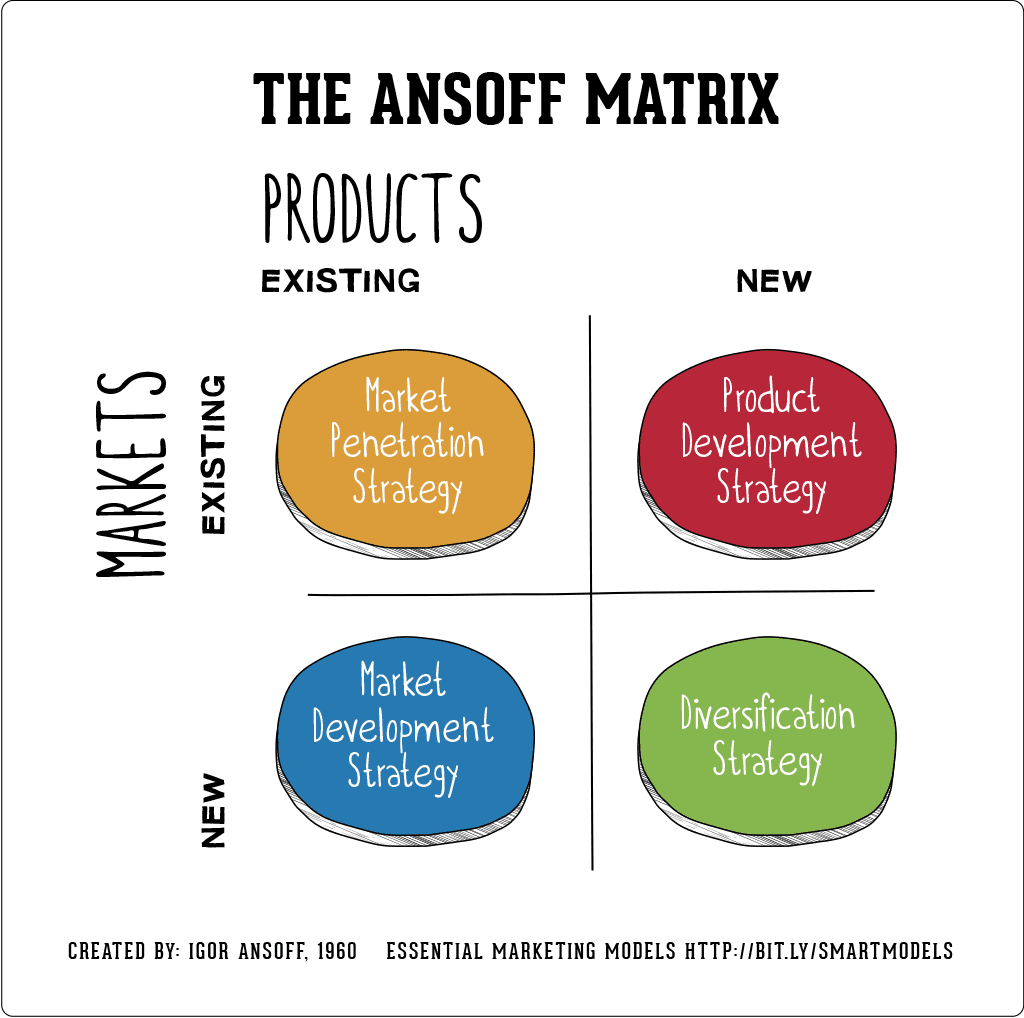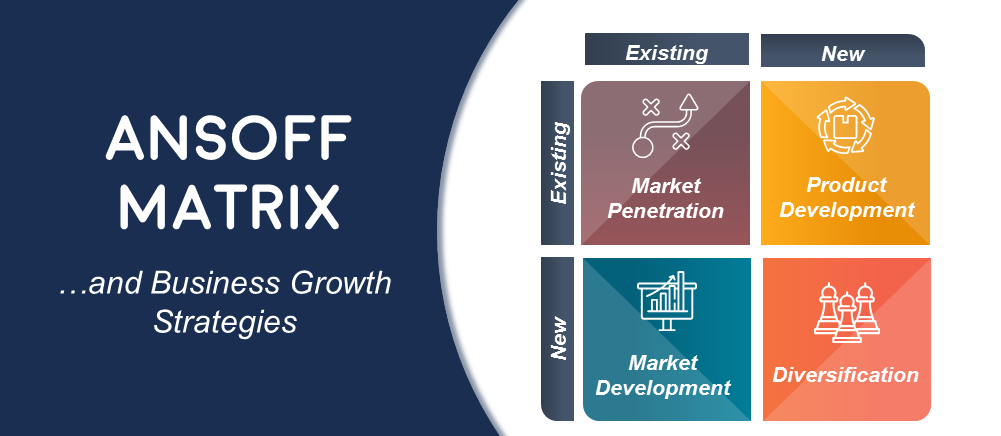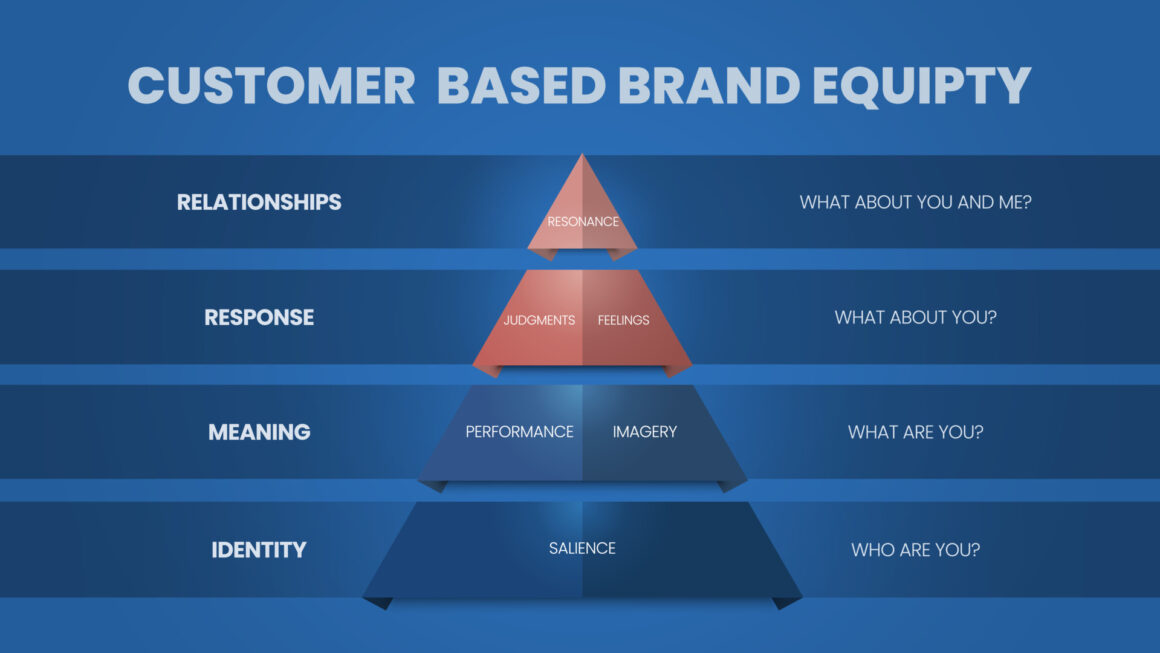The Ansoff Matrix is a marketing model used by firms to analyze their product and plan strategies for product/market growth. Popularly known as the Product/Market Expansion Grid, was developed by the business manager, and applied mathematician H Igor Ansoff in 1957. This matrix helped many marketers to understand the risk involved in growing their business. It considered two main parameters are current or already existing activities and potential new products/markets can be developed.
Ansoff explained that product marketing strategy is a cumulation of four stages that set the direction for the business strategy.
How to use the Ansoff matrix
As a part of product marketing strategies and based on existing/new products/markets, it is classified into four stages.

This matrix answers to below strategic questions:
- Market Penetration: How to market more of firms’ existing products or services to their existing customer base?
- Market Development: How to start products in new markets?
- Product Development: How to develop existing services or products?
- Diversification: How to move new products into new markets? How to use existing customer base?
Let us understand each growth phase:
Market Penetration:
This is the first quadrant in the Ansoff matrix. This strategy is used when the organization needs a growth strategy for an existing product within the known market. It is crucial to have useful information on competitors and customer needs.
One can implement the market penetration strategy in the following ways:
- Using competitive pricing strategies to attract new customers
- Aggressive promotional campaign and distribution efforts, increase usage by existing customers
- Acquiring a competitor in the same marketplace
The best example of market penetration is the Telecom industry. Most telecom products available in the market and must cater to that market. In such cases, competition is intense. This means that to grow, the organization may have to go out of its way to increase market share.
Market Development
It is the second market growth strategy in the Ansoff matrix. In this strategy, firms enter a new market with existing products and expanding into new geographic regions, customer segments, etc.
The market development strategy can be executed in several ways:
- Catering to a different customer segment
- Entering a new domestic market (expanding regionally)
- Entering a foreign market (expanding internationally)
The market development strategy is most successful when it fulfills the below conditions.
- The firm should own proprietary technology to leverage into new markets,
- Profitable potential consumers in the new market are profitable (i.e., they possess disposable income),
- Not much deviation in consumer behavior of the new market and existing market
The best example of the market development stage is the entering of leading footwear firms like Nike, Adidas, and Reebok, in international markets for expansion. These companies continue to extend their brands over new global markets.
Product Development
It is used for the firms that have a fair share of the market in an existing market and need to introduce new products for expansion and growth. Product development is successful only when the company has a great customer base and knows that the market for its existing product has reached saturation.
This strategy, too, may be implemented in several ways:
- Invest in R&D to develop new products to cater to the existing market
- Acquire a competitor’s product and merge resources to create a new product that better meets the need of the existing market
- Form strategic partnerships with other firms to gain access to each partner’s distribution channels or brand
This stage can be used when firms fulfill the following conditions.
- Strong understanding of their current market
- Provide innovative and inventive solutions to suffice the needs of the existing market
- Firms has a good customer base
The best example of product development, automotive companies are using electric cars to meet the dynamic needs of their current/existing market. Current market consumers in the automobile market have become more environmentally conscious.
Diversification
This is the last quadrant and riskiest stage of the Ansoff matrix. It introduces new products in a new market. It opens an entirely new revenue stream for the company. This strategy is the combination of all Ansoff strategies, with businesses developing new products and targeting new markets. It undertakes a whole set of actions (market research, R&D, product development, sales) and measuring them rigorously to assess the risks.
A firm can employ two types of diversification:
- Related diversification: Potential synergies to be realized between the new product/market and the existing business.
- Unrelated diversification: No potential synergies to be realized between the new product/market and the existing business.
For example, a leather shoe producer starting a line of leather wallets or accessories is pursuing a related diversification strategy. A leather shoe producer starting manufacturing phones is pursuing an unrelated diversification strategy.
The best example of diversification is Samsung. It began as a trading company but gradually expanded into insurance, securities, and retail. Currently, Samsung has a market presence in a diversified global set of businesses, including semiconductors, appliances, cameras, watchmaking, apparel, music services, cloud computing, and home automation.
Prime Example

If you enjoyed reading this concept, you may also like BCG Matrix and Four A’s of Marketing



